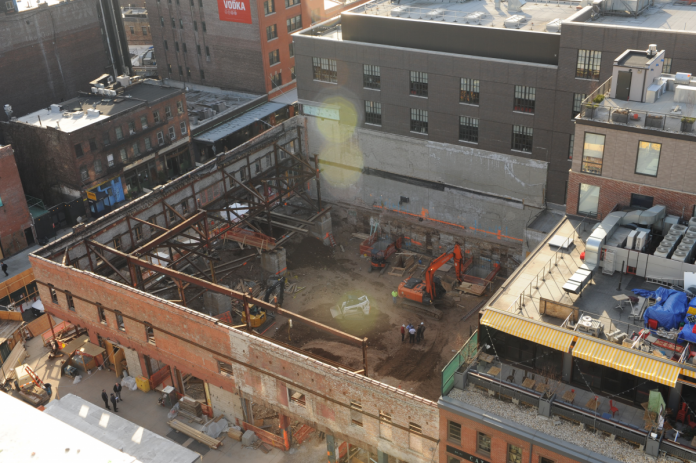
Manhattan District Attorney Cyrus R. Vance, Jr., and New York City Department of Investigation (“DOI”) Commissioner Mark G. Peters today announced the indictments of WILMER CUEVA, 50, and ALFONSO PRESTIA, 54, as well as their respective companies, SKY MATERIALS CORP. (“SKY”) and HARCO CONSTRUCTION LLC (“HARCO”), a/k/a “H&H Builders, Inc.,” for recklessly causing the death of Carlos Moncayo, a SKY employee, by failing to heed and address repeated warnings about unsafe work conditions at an active construction site.
Mr. Moncayo was killed when an unsecured trench in which he was working collapsed and fatally crushed him. The defendants are charged in New York State Supreme Court indictments with Manslaughter in the Second Degree, Criminally Negligent Homicide, and Reckless Endangerment in the Second Degree.[1]
“Carlos Moncayo’s death at a construction site was tragic, but it was also foreseeable and avoidable,” said District Attorney Vance. “As detailed in court documents, repeated warnings about safety hazards at 9-19 Ninth Avenue were issued in the months, weeks, and even minutes before a trench collapsed, killing Mr. Moncayo. Excavation work and trenching are some of the most dangerous jobs on a construction project, and it is during these critical moments that adherence to safety protocols and procedures is essential. In this case, the defendants are charged with recklessly disregarding their professional responsibility to protect workers, and we must do everything in our power to prevent similar incidents. I thank our partners at DOI, the NYPD, and OSHA, as well as the members of our Construction Fraud Task Force for their commitment to ensuring the safety and integrity of building sites throughout the City.”
DOI Commissioner Mark G. Peters said: “As charged, these defendants ignored repeated warnings that they were not following safe practices, conduct that led to a tragic outcome. This investigation highlights what DOI has seen in so many of its construction investigations—a direct correlation between integrity and safety. Working with the Manhattan District Attorney and our law enforcement partners, DOI will continue to hold accountable those who are indifferent to the dangerous construction practices endangering their workers and all New Yorkers.”
Police Commissioner William J. Bratton said: “In April, we responded to the scene of a deadly construction site in Chelsea to help victims, gather information, and evidence. What our detectives quickly learned was that this construction site was also a crime scene. After a thorough investigation, we announce the indictment of those responsible for this crime, as alleged. I’d like to thank the dedicated team of investigators and prosecutors from the Manhattan District Attorney’s Office who made today a reality.”
Director of OSHA’s Manhattan Area Office Kay Gee said: “Carlos Moncayo was a person, not a statistic. His death should not have happened. It reminds us that when employers neglect their legally required responsibility to safeguard their employees against on-the-job hazards, the tragic and irreversible result can be an incalculable loss to a worker’s family, friends and coworkers.”
According to the indictments and documents filed in court, between December 2014 and March 2015, SKY, an excavation subcontractor, and HARCO, a general contractor, managed and oversaw construction work at 9-19 Ninth Avenue between West 13th and Little West 12th Streets in the Meatpacking District. During that period, CUEVA, as SKY’s foreman, and PRESTIA, as HARCO’s senior superintendent, were responsible for ensuring workers’ safety and observing basic safety precautions at the development site.
As required by the New York City Building Code and Occupational Safety & Health Administration (“OSHA”) regulations, all excavations deeper than five feet must be fortified in order to protect workers from cave-ins before permanent support systems can be implemented. Common methods of fortification include shoring, which prevents soil movement by bracing trench walls with hard barriers, and sloping, which lessens the gradient of trench walls, decreasing pressure and the chance of collapse.

